From the rural plains to the valley-covered mountains of Montana, alpacas stand as fascinating creatures and nature’s unique gift. Their soft fleece, available in a palette of up to 22 natural colors, draws the admiration of many.
Today, we will discuss into the lifestyle and behavior of Montana alpacas, from their social group dynamics to dietary habits. You’ll learn how they communicate, the delights of raising and observing them, and even how they contribute to the region’s agriculture and economy.
Have you ever wondered what spending a day on an alpaca farm would be like? The stories of dedicated ranchers, the peaceful pastures they traverse, and the many hands-on experiences they offer might pique your interest.
- Related article: Montana Wildlife Observation
Let’s take a journey through the world of Montana alpacas to see how they blend harmoniously into the state’s vast landscapes and culture.
7 Key Takeaways on Montana Alpacas
- Montana’s alpacas are renowned for their soft and colorful fleece, with 95% being Huacayas and the rest being Suris, making each unique.
- Alpacas’ physical features, including a sleek body, long legs and neck, and soft, padded feet, make them fascinating for wildlife enthusiasts.
- Alpacas are sociable animals, living in herds and communicating through various calls and body postures to express emotions and needs.
- Known as strict grazers, alpacas have a diet tailored to their environment, requiring less food than similarly sized animals to stay healthy.
- Montana alpaca farms like Alpacas of Montana and AlpacaLand offer guided tours that provide hands-on experiences with the animals, including feeding and care.
- Mule Train Alpaca Ranch near Billings and Heart & Soul Alpacas in Silver Star offers tours and opportunities for visitors to stay and contribute to sustainable farming practices.
- Local alpaca clothing stores in Montana offer eco-friendly and unique products that support local ranching efforts.
About Montana Alpacas
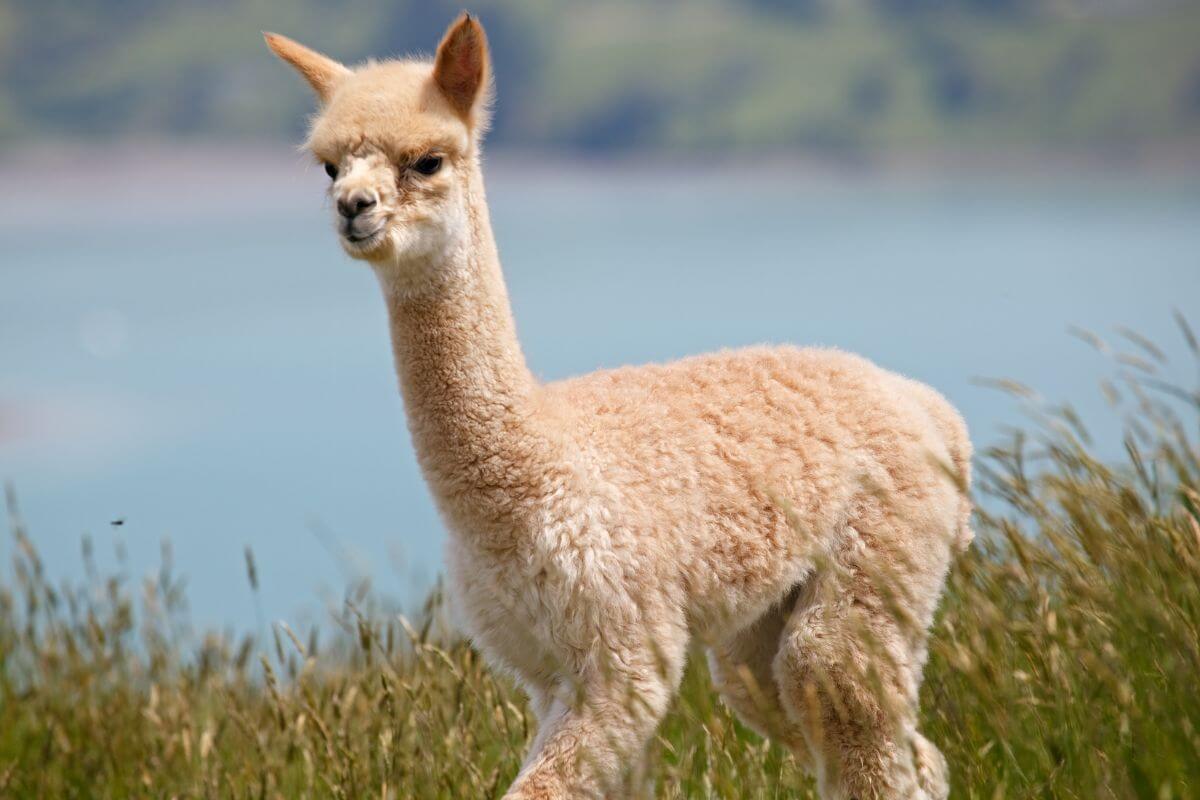
Montana might be known for its wide-open spaces and rugged mountains, but it’s also home to some adorable and unique residents: alpacas. These fluffy creatures have found their niche in the state’s diverse landscapes, adding a touch of charm to its farms and ranches.
Let’s explore more about Montana’s alpacas, from their role in local agriculture to the experiences they offer visitors.
Montana Alpaca Physical Characteristics
| Physical Characteristic | Description |
| Body | Slender-bodied |
| Legs and Neck | Long |
| Heads | Small |
| Hair | Soft, silky |
| Ear | Large, pointed |
| Feet | Soft, padded |
Montana alpacas are well-loved for their unique physical traits. They are known for their beautiful alpaca fleece which is super soft and often free of guard hair. Their fleece comes in an impressive range of colors, up to 22 different shades, making each alpaca special.
When we look at their types, the majority of alpacas (around 95%) are Huacayas, while the remaining 5% are Suris. These creatures are the smallest among the domestic South American camelids.
This variety of features makes alpacas both fascinating and delightful to observe, adding to their allure for wildlife enthusiasts and anyone with an appreciation for unique animals.
Montana Alpaca Behavior
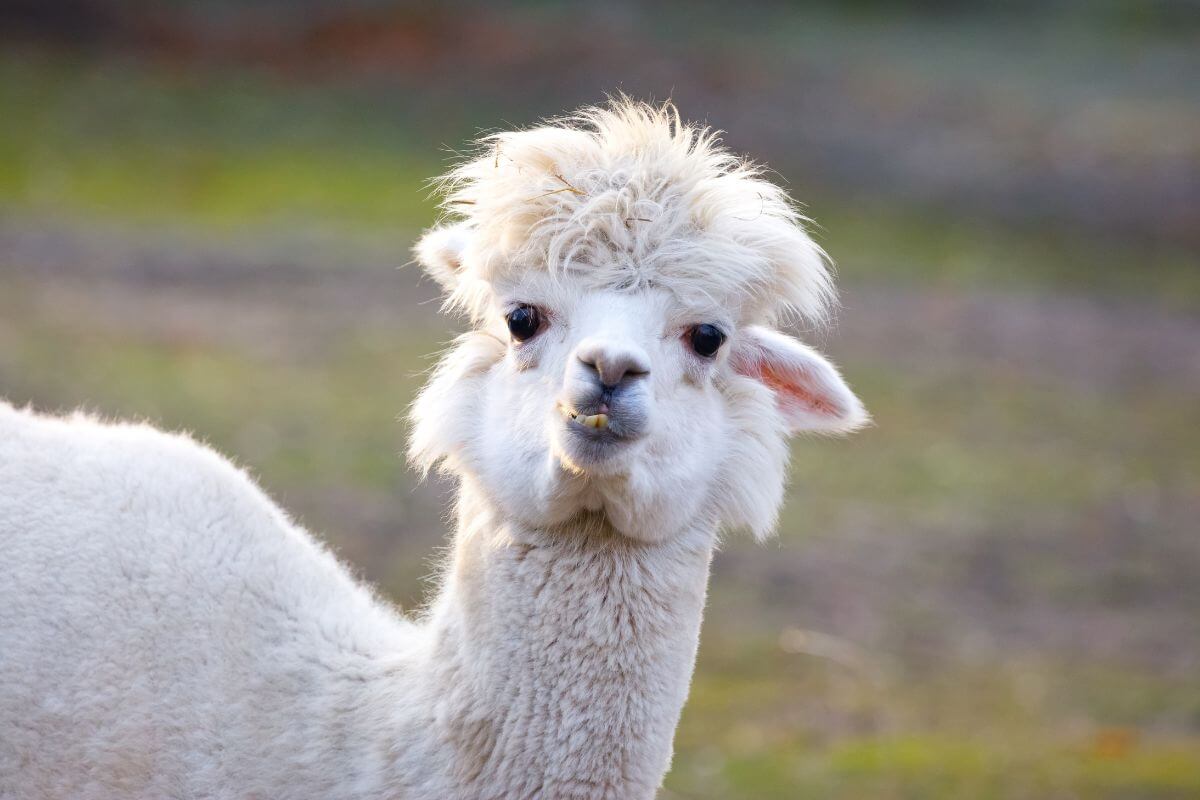
Montana alpacas are not only captivating to watch but also fascinating to study. These mammals are all about community, typically living in herds of up to 20, relying on social bonds for their well-being. You might catch them communicating through a range of calls, using specific tones to express their emotions.
The dynamics within an alpaca herd can get quite interesting. When tensions rise, some alpacas might resort to spitting, especially at those they find bothersome. This behavior doesn’t paint the loveliest picture, but it’s a part of how they assert themselves and deal with conflicts.
In another curious twist, alpacas have this amazing habit of designating a specific spot for waste. It’s like they have a built-in sanitation system, keeping their living space tidy. This is not only efficient for cleanliness but also plays a role in marking territories.
Alpacas are expressive beings. They communicate not only through calls but also with their bodies. You might hear them humming softly, especially during times of relaxation or stress.
They also rely on various vocalizations and intricate body postures, such as neck stretching, ear and tail movement, and head positioning, to convey different messages among the herd members.
Montana Alpaca Food Habits

Alpacas are picky eaters, known as strict grazers in the animal world. Their diet reflects the harsh environments they’ve adapted to within their native South America, where domestic herds make their meals out of the sparse grasses covering the Andean mountains and valleys.
This habit has developed over thousands of years, making alpacas much less demanding in terms of the quantity of food they need compared to other animals of similar size.
Most alpacas in human care get a mix of fresh grass and low-protein hay. For instance, the Huacaya alpacas at the zoo are given a diet of mixed grass along with special herbivore feed. This diet makes sure they get all the nutrients they need to stay healthy and happy.
Montana Alpaca Tours
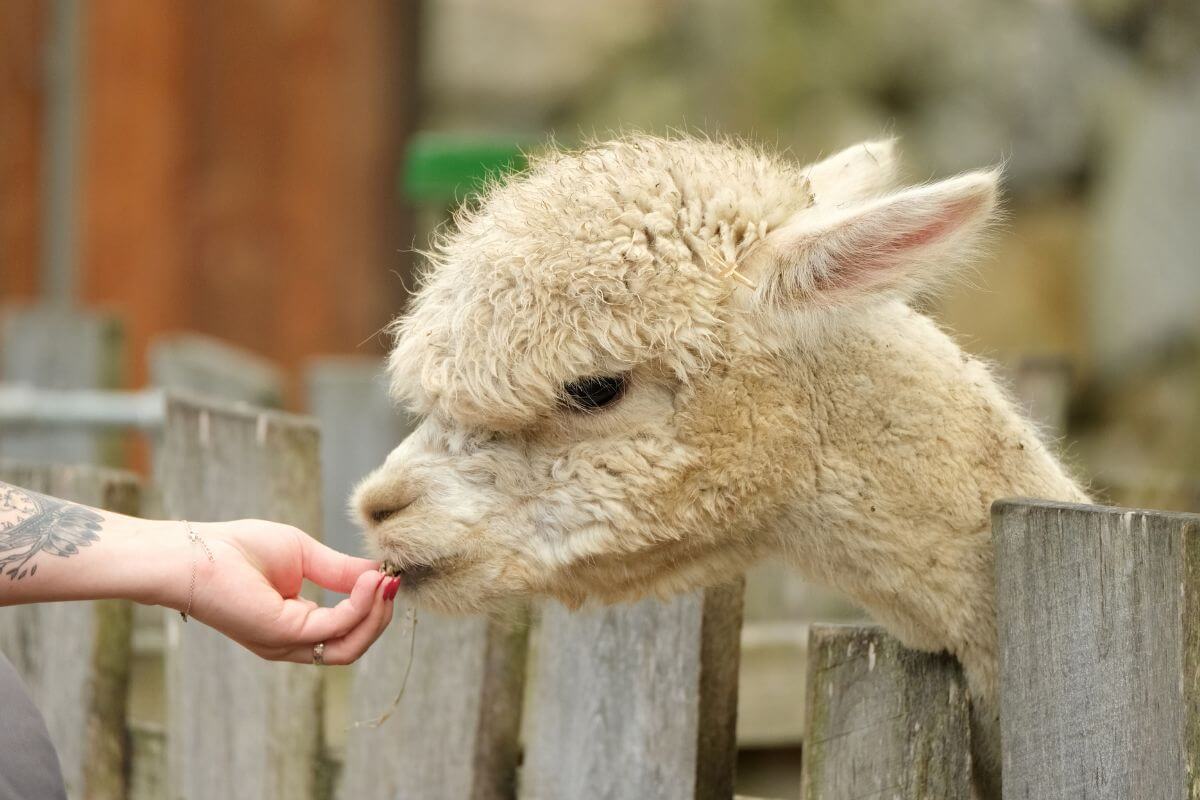
Exploring Montana’s alpaca farms through organized tours is a fantastic way to get up close and personal with these fascinating creatures. Each tour offers a unique glimpse into the world of alpacas, combining education, hands-on experiences, and breathtaking views of the Montana landscapes.
Joining one of these tours not only enriches your understanding of alpacas but also supports local farms and their sustainable practices.
1. Alpacas of Montana
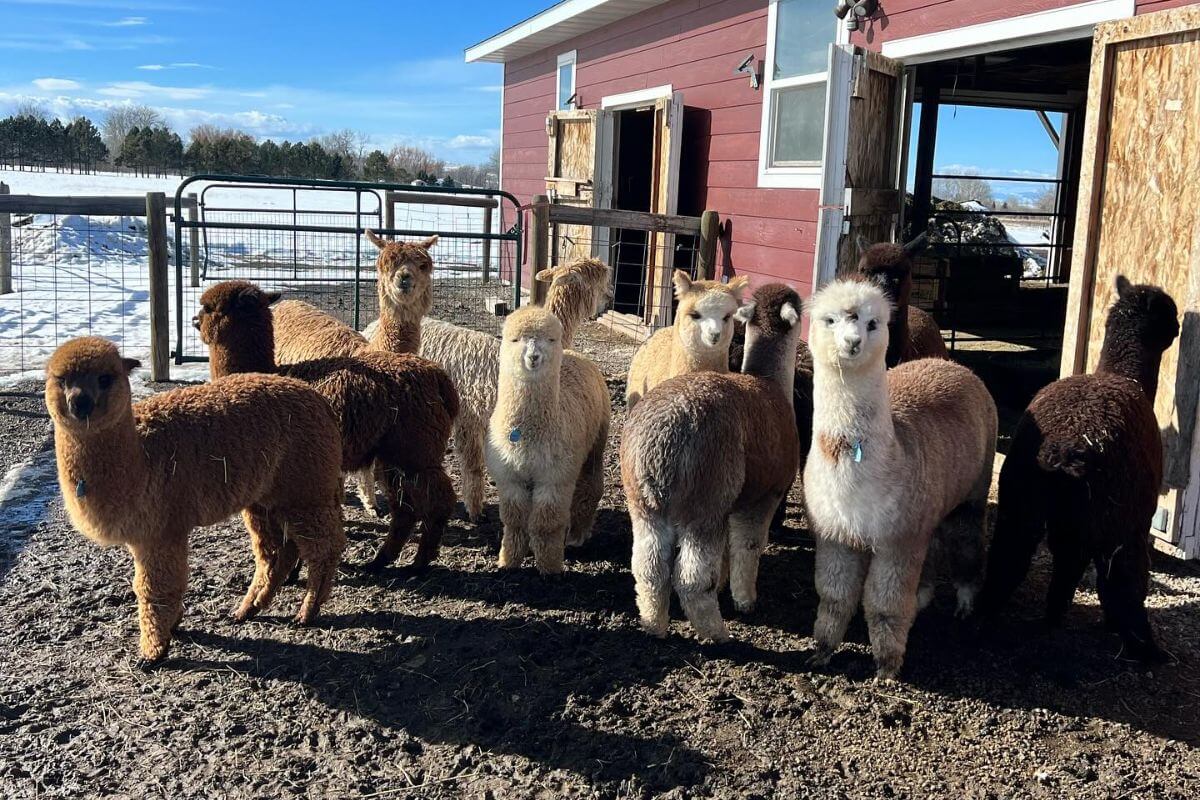
| Name | Location | Description |
|---|---|---|
| Alpacas of Montana | Bozeman | A family-owned farm with over a decade of experience, home to more than 120 alpacas, specializing in raising, selling, and breeding. |
Each year, Alpacas of Montana finds new homes for 20-30 alpacas and turns alpaca manure into super-rich fertilizer, showing their full commitment to sustainable farming.
Eager to share their love for alpacas, Alpacas of Montana warmly welcome visitors through their gates on daily farm tours during the summer. The tour spans for about 60 minutes, offering a hands-on and educational experience.
It’s not your average walk in the field – you’ll get to feed the alpacas and llamas their favorite snacks, learn how to walk and care for them, and even enjoy giving them baths in the sun.
What’s truly special about their tours is the chance to meet the newborn alpaca babies and their protective moms, depending on the season. The Alpaca & Llama Farm Tour Experience, a must-do for wildlife enthusiasts, is available on select days from Thursday to Monday for $40.
This price is a small investment for a once-in-a-lifetime experience that enriches your knowledge of and connection to these lovely animals.
2. AlpacaLand Montana
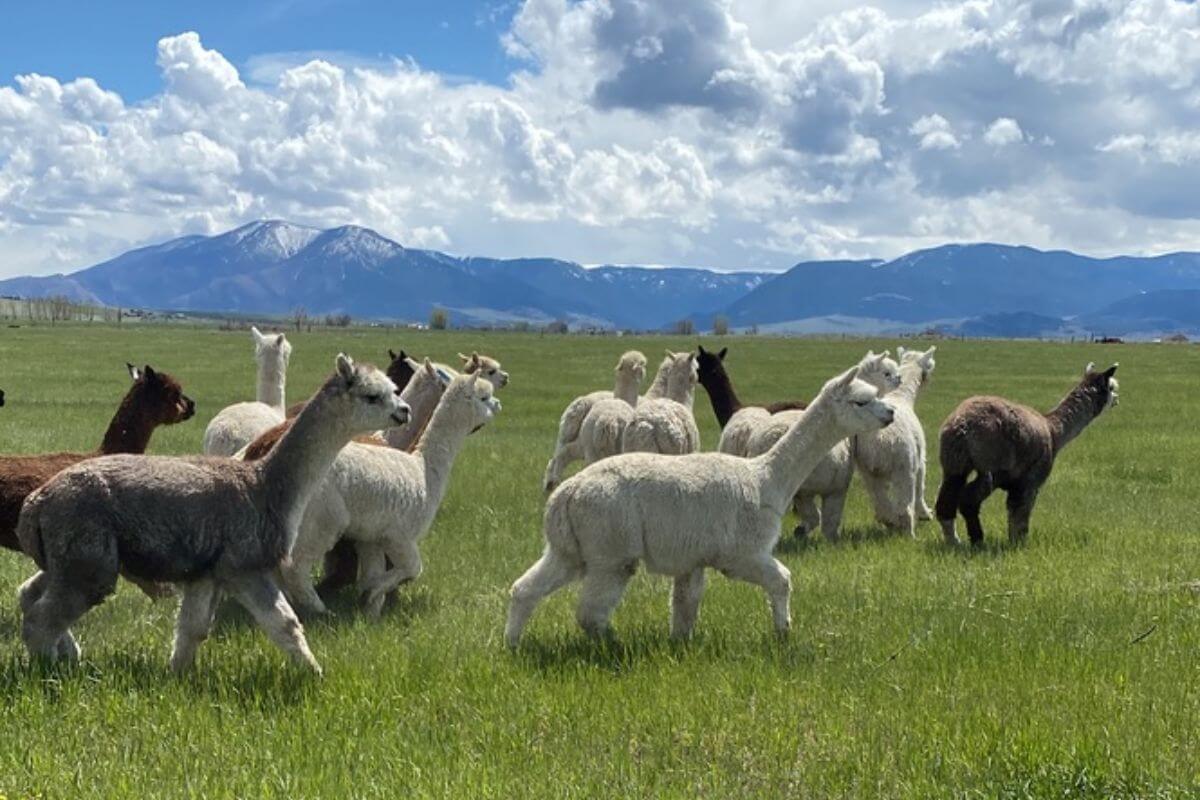
| Name | Location | Description |
|---|---|---|
| AlpacaLand Montana | Bozeman | Their tours allow visitors to stroll through the land alongside 300 alpacas and interact with mom and baby alpacas by hand-feeding and touching them. |
AlpacaLand Montana, located in the heart of Bozeman, is a dream come true for anyone who loves alpacas. It’s not just a place to see these adorable creatures from afar; it’s an immersive experience waiting to be explored.
Here’s what you can expect on your visit to AlpacaLand Montana:
- Free Guided Tours – The highlight of a visit to AlpacaLand is their free guided tour, where you get to walk through the fields surrounded by about 300 alpacas. You also have the chance to hand-feed and touch both adult alpacas and their cute babies.
- Agritourism Alpaca Experience – AlpacaLand has curated an incredible agritourism experience, seamlessly blending education and entertainment. You not only get to observe the alpacas in their natural habitat but also learn about their care, feeding, and place in the agricultural landscape.
- Alpaca Store – To complete your alpaca adventure, make sure to visit the on-site alpaca store. Here, you can find a range of alpaca-related products. It’s an excellent place to pick up a memento of your visit or a gift for someone who shares your love of alpacas.
This experience is not only enriching but also gratifying, especially for wildlife enthusiasts looking to deepen their understanding of these captivating animals and the efforts made to sustainably engage with nature.
3. Mule Train Alpaca Ranch
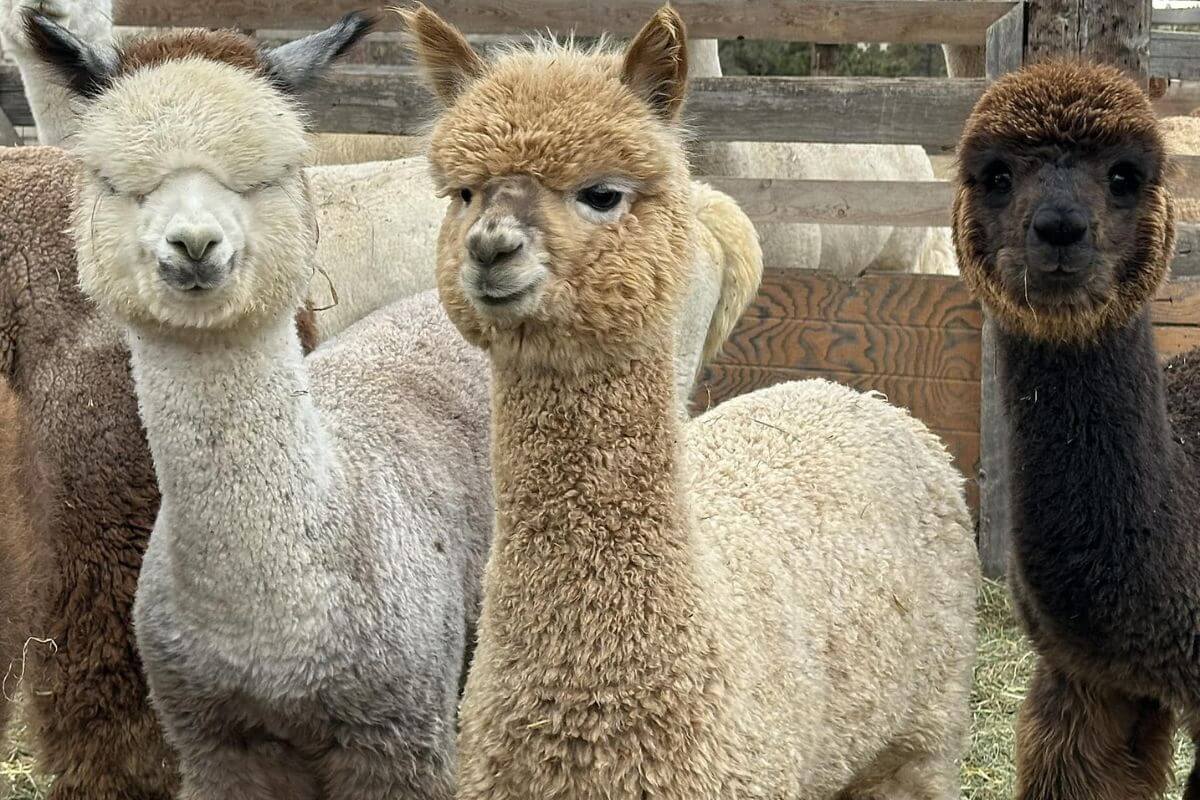
| Name | Location | Description |
|---|---|---|
| Mule Train Alpaca Ranch | 17 miles (27.4 km) west of Billings | A gem near Yellowstone National Park and the Rocky Mountains, this ranch boasts a diverse herd of colorfully arrayed alpacas. |
Mule Train Alpaca Ranch offers a whole range of services that make it a favorite among visitors and enthusiasts. From alpaca sales to sponsorships, breeding, and agisting, they cover it all. Additionally, the ranch is open for various events and tours.
One special aspect is their ranch tours, where you get to meet and greet these woolly wonders up close. Whether you’re simply visiting to enjoy some time with the alpacas, hosting an event, or even getting that perfect alpaca photo for your Instagram, they’ve got you covered.
Here is some handy information about Mule Train Alpaca Ranch tours and their pricing:
| Age/Group | Price |
| Family Group (5 or less) | $50 |
| Adults | $20 |
| Kids | $10 |
This place is not just a tourist stop; it’s a full-time working farm, so be prepared for an authentic alpaca experience. It’s impossible not to feel a burst of joy when you’re close to alpacas, and Mule Train Alpaca Ranch provides just the place for that.
4. Heart & Soul Alpacas and Guest Cabins
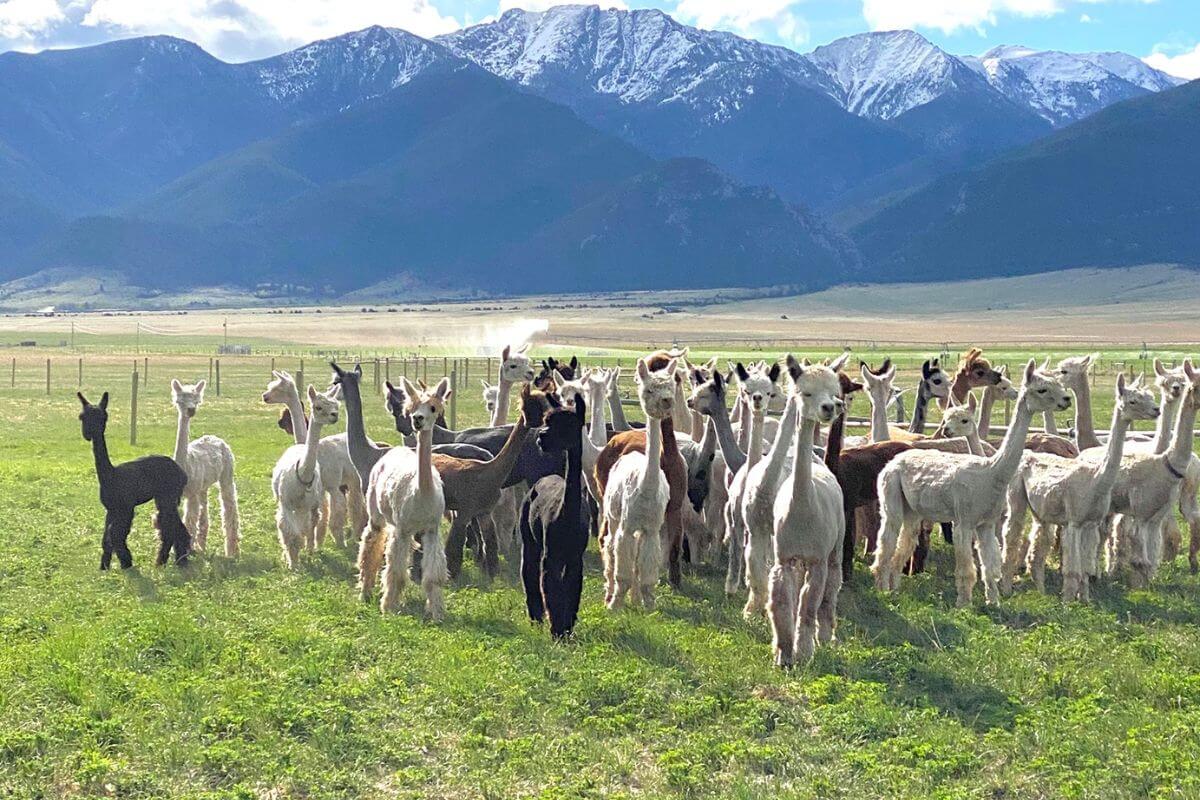
| Name | Location | Description |
|---|---|---|
| Heart & Soul Alpacas and Guest Cabins | Silver Star | A family-owned and operated business where alpacas are the main attraction, offering a unique experience for visitors. |
At Heart & Soul Alpacas, you can stay in one of their guest cabins, like the cozy retreat in Whitehall. It’s a 1-bedroom, 1-bathroom space where you can immerse yourself in farm life, a stone’s throw away from their alpaca ranch.
Here, you have the chance to sign up for an alpaca tour, a delightful way to get up close to these gentle animals. The adventure doesn’t end there; right next to Heart & Soul is a general store, perfect for picking up souvenirs or locally made treats.
For those who love to fish, the Jefferson River is a short trip away and offers excellent fly fishing. And if you’re up for a drive, the stunning landscapes of Big Sky and the wonders of Yellowstone are within reach.
Heart & Soul doesn’t just let you experience alpacas; they offer a range of services:
- Sales – They specialize in top show quality Suri & Huacaya alpacas, perfect for breeding, shows, or their luxurious fiber.
- Mentoring – New to alpaca farming? They provide all the guidance needed in raising, selling, and managing these beautiful creatures.
- Shearing – Their professional shearing service ensures that your alpacas are comfortable and well-cared for.
- Fiber Processing – With their full-service fiber mill, Heart & Soul Spinnery produces a variety of alpaca products like rovings, batts, yarn, and felt.
- Agisting – Their 20-acre ranch, dotted with oak trees, is a paradise for alpacas. They offer top-quality feed, including specially formulated pellets, and rotate the pastures to ensure plenty of spring grass for all animals.
With a passion for these gentle creatures, alpacas are all they do at this unique alpaca ranch.
Montana Alpaca Clothing
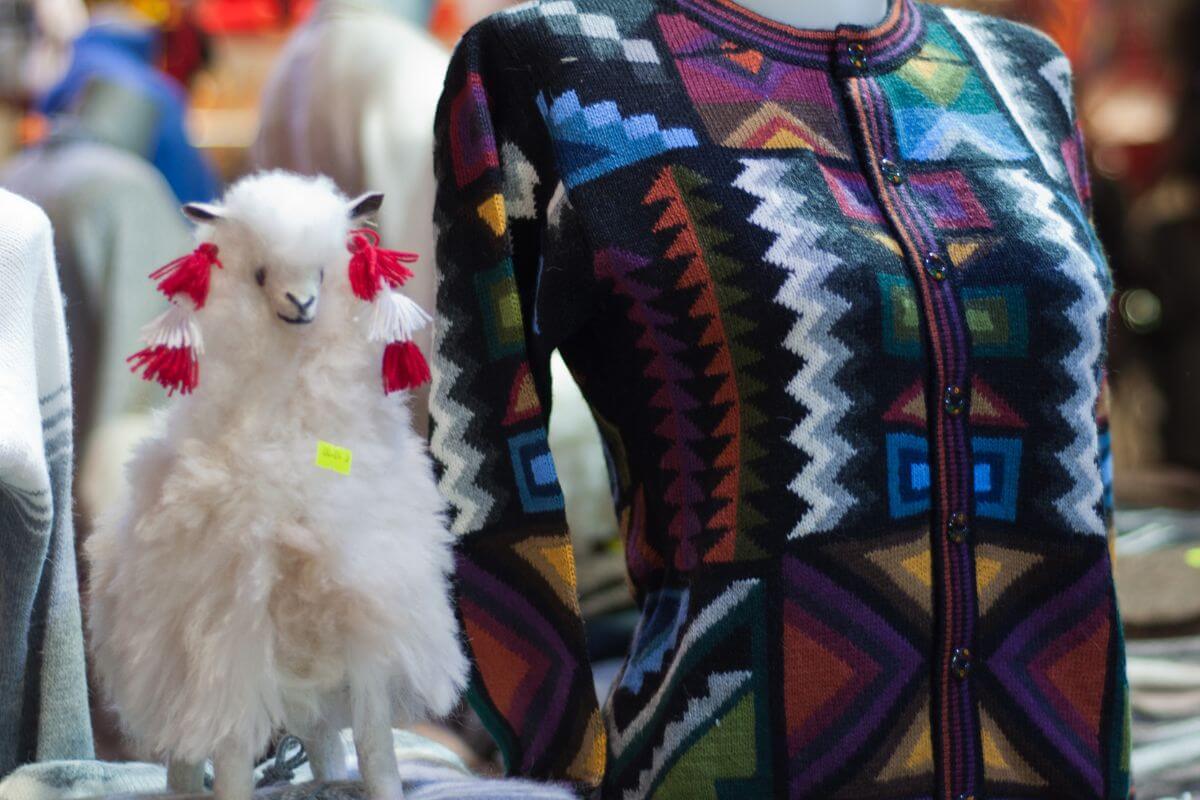
Montana offers a unique chance to not only encounter alpacas up close but also to find a variety of alpaca products. Alpaca wool is known for its exceptional softness and warmth, making it a sought-after material for clothing, especially in the cool Montana climate.
Many local farms and shops specialize in making alpaca clothing, perfect for staying cozy and stylish in the great outdoors.
Montana Alpaca Clothing Benefits

Montana Alpaca clothing isn’t just about style; it’s a smart choice for nature lovers. The fiber comes from happy animals that are gently cared for, and the process is kind to the Earth.
Here’s why you’re going to love alpaca fiber from Montana:
- Warm and Cozy – Alpaca fiber provides exceptional warmth, perfect for Montana’s cold weather or cozy evenings at home.
- Moisture Management – Alpaca fiber naturally wicks moisture away, ensuring you stay dry and comfortable during outdoor activities.
- Luxurious Feel – Often referred to as “the fiber of the gods,” alpaca fiber offers a soft, luxurious feel similar to cashmere.
- Sustainable and Ethical – Alpaca clothing reflects a commitment to sustainability and animal welfare, making it an eco-friendly choice.
- Versatile Design – Designed with your lifestyle in mind, alpaca clothing offers freedom of movement and comfort for various activities.
- All-Season Comfort – Whether it’s spring or winter, alpaca clothing adapts to the weather, providing comfort and versatility year-round.
I remember the first time I tried on an alpaca sweater — it was like wrapping myself in a cloud that was just the right temperature. If you’re looking to stay cozy in Montana’s changing seasons while supporting nature-friendly fashion, alpaca clothing might just be your new favorite find.
Montana Alpaca Clothing Stores
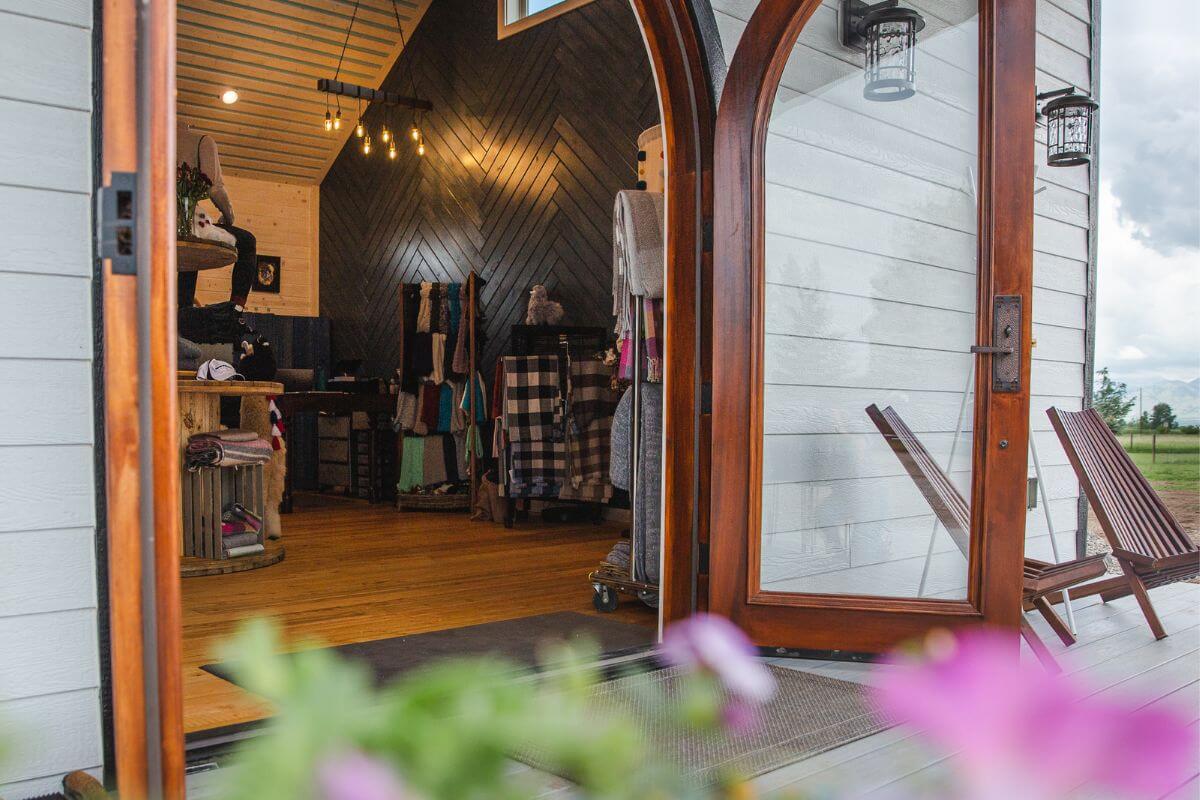
If you’re on the lookout for unique alpaca products in Montana, the very same spots that treat you to alpaca tours are perfect for picking up gear too. These stores offer everything from cozy alpaca socks to stylish hats, all made with a touch of alpaca charm:
- Alpacas of Montana – Alpacas of Montana puts extra thought into their creations by using a special yarn called Dry Fusion Technology®, ensuring each piece is both unique and top-quality. They’re all about being eco-friendly, incorporating recycled and up-cycled alpaca fibers wherever they can.
- AlpacaLand – At AlpacaLand, you’ll discover a selection of alpaca treasures from luxuriously soft sweaters and vests to cuddly animal stuffies. Plus, they aim to stock items mainly sourced from their alpaca herd, adding an extra level of authenticity.
- Mule Train Alpaca Ranch – For those into crafting, Mule Train Alpaca Ranch has a barn store packed with fiber spinning tools, perfect for any knitting enthusiast. Alongside these tools, you’ll find a range of alpaca knitwear, scarves, and sweaters, all produced from the same alpacas that call this ranch home.
- Heart & Soul Alpacas – Heart & Soul Alpacas is your go-to for unique alpaca-related gifts. Whether it’s alpaca-themed home goods or cozy socks, they have it all. They’ve even got alpaca pens to take your stationery game to the next level.
These stores not only offer a shopping experience unlike any other, but they also support local farms and ranches that focus on sustainability and quality at every step, ensuring your purchase has a positive impact.
Montana Alpacas Final Thoughts
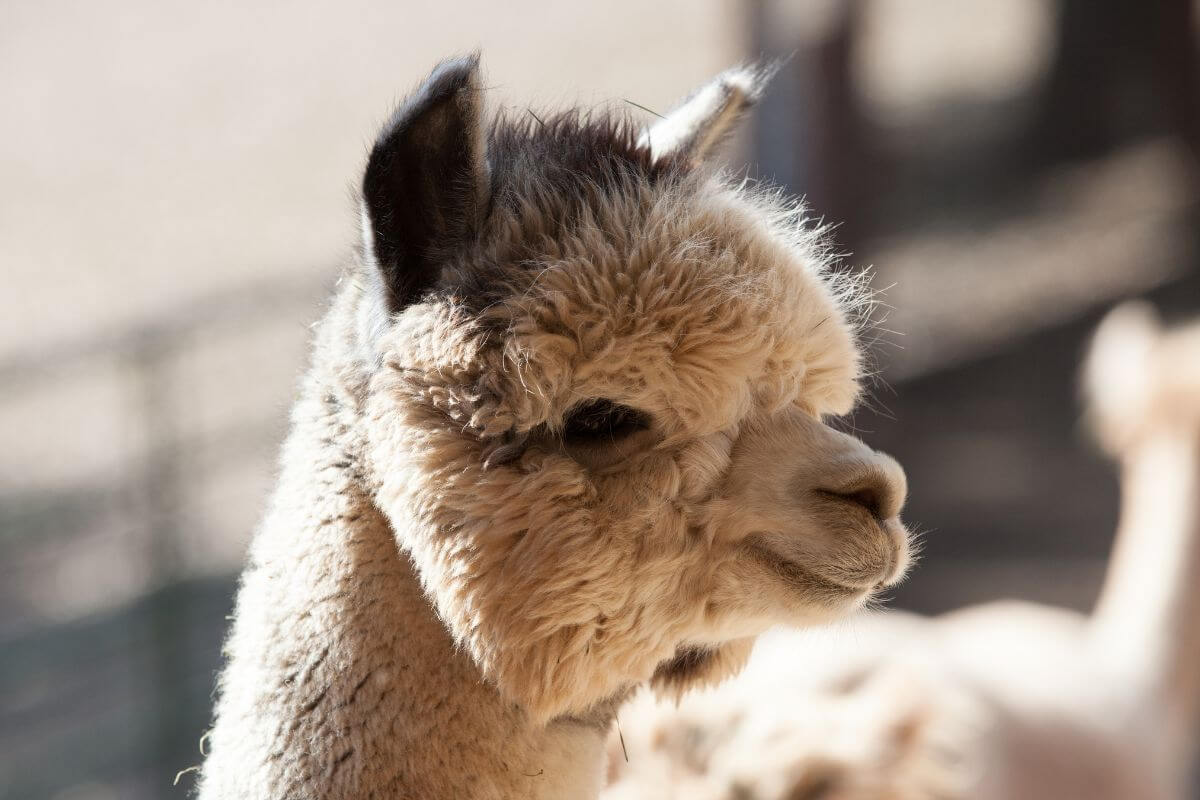
Montana’s alpacas stand out as a fascinating and beloved part of the state’s agricultural landscape, offering a unique experience for wildlife enthusiasts. Their soft and colorful fleece, composed of sleek bodies, long legs, and uniquely designed feet, make them a joy to observe.
Exploring Montana’s alpaca farms through guided tours not only provides a close-up look at these gentle animals but also supports local sustainability efforts. As you engage with alpacas and explore eco-friendly alpaca clothing options, you embrace a lifestyle that is kind to nature.
Whether feeding newborns, enjoying the warmth of alpaca wool, or witnessing local farms’ dedication to responsible animal care, the alpaca experience in Montana is both educational and heartwarming, leaving a lasting impression on all who take part.
Montana Alpacas FAQs
1. Who Owns Alpacas of Montana?
Alpacas of Montana is owned by James Budd, who is also the co-founder and leads the development of yarn, fabric, and other products for the company. Budd’s role encompasses overseeing operations, managing the business, and driving innovation within the alpaca industry.
2. Which U.S. State Has the Most Alpacas?
The U.S. states with the most alpacas include Ohio, Washington, Oregon, Colorado, and California.
While alpaca breeders can be found across the country, these states have particularly high concentrations of alpaca farms and contribute significantly to the national alpaca population, which totals around 53,000 animals.
3. Why Is Alpaca So Expensive?
Alpaca is often considered expensive due to several factors, including the limited supply of alpaca wool compared to other fibers like sheep wool. This scarcity leads to higher demand for alpaca products, consequently driving up prices.
Additionally, alpaca fiber is known for its exceptional quality, softness, warmth, and hypoallergenic properties, further contributing to its premium pricing.
4. Is Alpaca Hair Valuable?
Alpaca hair is valuable due to its unique characteristics. The semi-hollow structure of alpaca fibers provides excellent insulation, making alpaca products exceptionally warm.
Additionally, alpaca fiber is known for its fine texture, which contributes to its luxurious feel and high demand in various industries such as textiles and fashion.
5. Can You Eat Alpaca Meat in the U.S.?
In the U.S., the sale of alpaca meat is not regulated by the USDA but rather falls under the jurisdiction of the FDA and local state authorities. This means that alpaca farmers can only sell their meat in states that honor voluntary inspection seals.
However, in Montana, retail sale of alpaca meat is allowed, providing an opportunity for alpaca farmers in the state to market their product.
Fuel your wonder about Montana through our articles below:
- Montana Bear Overview
- Montana Bighorn Sheep
- Montana Bird Guide
- Montana Deer Types
- Endangered Animals in Montana
- https://idahofallsidaho.gov/DocumentCenter/View/5038/Alpaca
- https://nationalzoo.si.edu/animals/alpaca
- https://www.montana.edu/business/news/articles/1171302266.html
- https://www.facebook.com/photo.php?fbid=899654148832128&set=pb.100063626530457.-2207520000&type=3
- https://www.facebook.com/photo.php?fbid=122111693996025575&set=pb.61550767275376.-2207520000&type=3
- https://www.facebook.com/photo.php?fbid=860374472763463&set=pb.100063727532881.-2207520000&type=3
- https://www.facebook.com/photo.php?fbid=560406039223701&set=pb.100057629282947.-2207520000&type=3
- https://www.facebook.com/photo.php?fbid=738065754990969&set=pb.100063626530457.-2207520000&type=3

